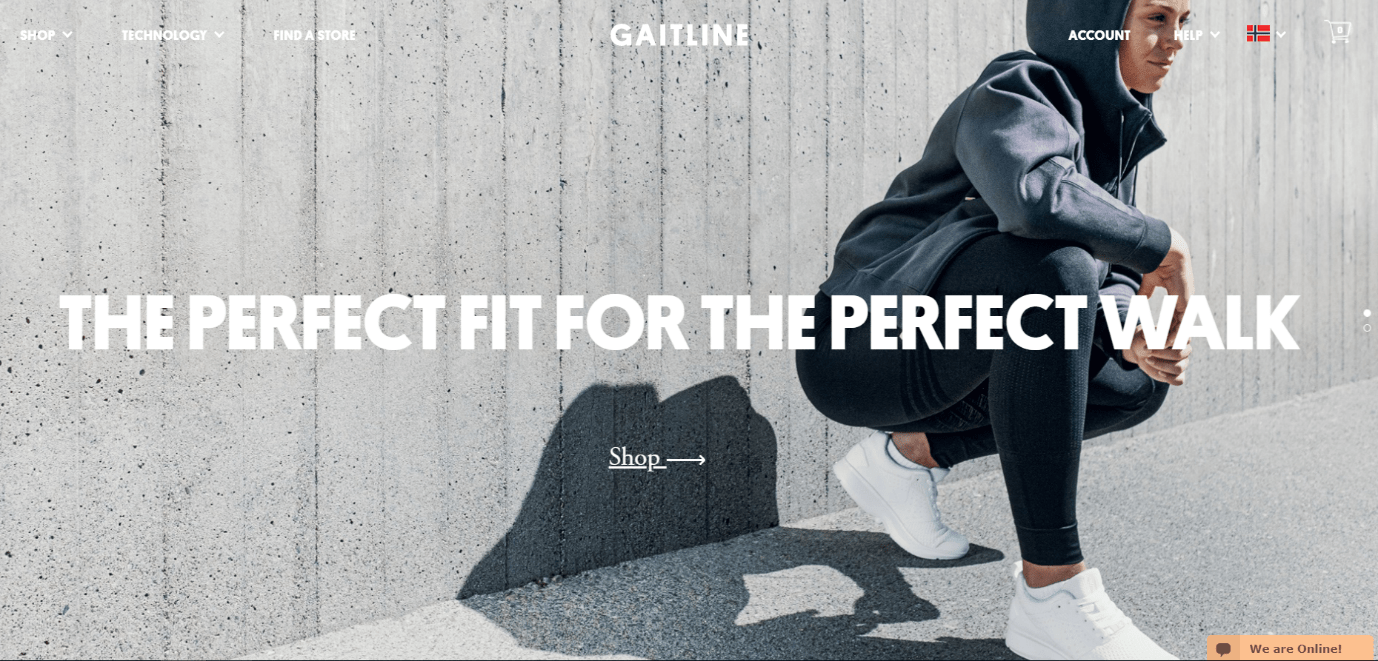Creating an eCommerce website is much easier than opening a brick-and-mortar store. There is no need to rent warehouses and no limits on the number of products you can hold. Such a store works 24/7 and the majority of operations are done automatically. So, you don’t even need to hire salesmen, cleaners, security personnel, etc.
Online businesses are growing like mad, leaving traditional brick-and-mortar stores far behind. Today, more and more consumers are adopting online shopping for its convenience. According to Statista, 1.92 billion of people will buy goods and services online in 2019. An increase over 2018’s 1.79 billion digital buyers.
Circuit City and Kmart are just a couple examples of the many companies which have filed for bankruptcy and been obligated to shut down their offline stores. In order to keep pace in contemporary reality, you probably need to consider moving your business online.
Creating an eCommerce website is much easier than opening a brick-and-mortar store. There is no need to rent warehouses and no limits on the number of products you can hold. Such a store works 24/7 and the majority of operations are done automatically. So, you don’t even need to hire salesmen, cleaners, security personnel, etc.
At the same time, there are still some points you should take into account to create an efficient, commercially viable web store.
Pros and Cons of an eCommerce Business

First of all, let’s have a look at the advantages of running a business online.
- You can work without renting workspaces and warehouses. Having a small office for maintenance is enough. This significantly decreases the amount of money you have to spend when launching an online business.
- Investment returns on quickly. If the pay-back period of a regular grocery store is from three to five years, then in the case of a large online service or portal, the same period will be from half a year.
- You may use an online store either as your main source of profit or as an additional channel. For example, your target audience is seniors. According to the latest studies, only 28% of them buy via the internet. Therefore you can do without a website but having such an extra channel will inevitably increase the number of your customers.
- The threshold of entry is significantly lower. The presence of free competition and the lack of opportunities for monopolizing the market attracts not only beginners but also experienced businessmen.
- There are no regional restrictions. You can find customers both in your city or region and throughout the whole world. Choose the right logistics company for your business needs and sell anywhere you want via a single website.
- An online store is available for customers in 24/7 mode: 24 hours a day and 7 days a week.
- Business on the Internet does not require a large number of maintenance personnel. You may be sufficiently covered with just an admin and a couple of sales reps.
- There are no restrictions on the number of products shown on the virtual display. Amazon sells three billion products through its 11 marketplaces. Its US site has more than 564 million offerings.
- In the case of promotion, you can focus only on your target audience. Modern tools such as Google Ads allow you to target people you want to reach based on interests, gender, age, etc. This decreases the cost of advertisement significantly.

After reading all of the mentioned advantages, you may be thinking that having an online store is an ideal solution for everyone, but it’s not always the case. Running a business online has its disadvantages as almost anything in the world. Carefully look at the following points and decide whether they are crucial for your business.
The first disadvantage of eCommerce is that many consumers still prefer brick-and-mortar stores. These people appreciate the real shopping experience of touching things and trying items on. According to Statista, the attitude to shopping online depends on age. The study they carried out in 2017 showed that:
- 67% of millennials prefer buying online
- 56% of gen-Xers prefer buying online
- 41% of baby boomers prefer buying online
- 28% of seniors prefer buying online In order to get through this potential risk, you should learn your target audience first. For example, if you sell goods for seniors, it’s likely you don’t need to have a presence on the internet unless you want to reach that exceptional 28% of seniors who love buying online.
The second and last disadvantage of selling online has to do with the difficulties associated with building customer trust. While in the case of brick-and-mortar stores everything is obvious (people drop into your store, touch items, buy them and go), building equally strong relationships turns out to be a challenge for online store owners.
Building a relationship online is a very long process where every detail matters. It includes providing a product in good condition, having warm-hearted customer support and providing up-to-date information on the site. You probably will also have to make an effort to earn the loyalty of consumers, but once you have accumulated it you will see a great increase in revenue.
Moving Business Online: First Steps

Once you’ve decided you need an online store, there are4 things that are worth doing first.
- Determine what resources you can allocate for the creation of the site: money, time, people. Explore the required financial, security, and legal matters that are must-haves in your country to launch an online store.
- Determine who will lead the project and make decisions: whether it’s you, as the business owner or СEO, or someone you plan to hire who will be the contact person at the time of development. It could be more efficient to have such a professional on your side since they have a relevant background and know how to effectively build communication with developers.
- Determine whether you want your online site to be a continuation of your existing brand, or whether it should have completely different positioning. You may have a reason for the latter. For example, the types of consumers you target online and offline are completely different.
Having the same brand presented both online and offline brings you a huge benefit, which today is called omnichannel. This means a cohesive and seamless customer experience through a variety of integrated channels. It makes online and offline presence of business interrelated. As a result, customers get a perfect experience where your brand’s online and offline presence flows in unity.
Implementing an omnichannel strategy can significantly boost your revenue. First, it makes shopping more convenient. Second, it helps you engage those customers who don’t love buying online. According to statistics, 50% of people who search for products on the internet visit brick-and-mortar stores within a day. If you don’t want to lose them, you probably have to run a business with both an online and offline presence.
Choose a comfortable work model: work with an agency or hire a developer who will work directly with you. If you choose the first one, you’ll get professional help at the planning stage. There are a lot of points that have to be considered before developing an online store. You have to decide among eCommerce platforms, shipping methods, hosting providers, 3rd party integrations, and so on.
Agencies usually include experienced specialists that have a deep understanding of eCommerce and market and can select the best option for you. If you work with a freelance programmer, you’ll probably not have such a benefit. Even if your programmer knows both frontend and backend, they likely lack a complete understanding of business processes.
Selection of agency

Selecting the right partner is crucial for every business. The same is true for eCommerce. There are a lot of agencies that offer development services for merchants who want to move online. But how do you choose the best? Thankfully, there are 5 strategies for figuring out this complicated issue.
- Decide what you are expecting from the partner. Here could play a role such thing as the difference in time between the company and the customer, the method of communication (for example, some companies prefer to communicate with the client solely in writing, some prefer to have a quick call in order not to avoid wasting time solving issues). But, of course, it depends. Companies often take into account the client’s wishes, but in this case it is best to discuss this with the client. Also, the scale of the company can play a role. Many customers are afraid to give their project to a small company, preferring instead to trust large companies that have been on the market for a long time.
- Check the correspondence of the price with quality. The highest priced product doesn’t always imply the highest quality product. Visit websites that have been made by the agency and decide whether you like them.
- Pay attention to the process. Are you comfortable with the company’s processes? There are many methodologies for project development and management. At the moment, the most popular are Agile methodologies that allow you to change or add requirements to the product in the process of work. Therefore, the customer can add their requirements in the process, which will be discussed and evaluated separately during the project.
- Be patient during the estimate stage. Careful processing of your requirements, or collection of requirements is a time-consuming process. In order to give the customer the most accurate estimate, it is necessary to collect as many requirements for the project as possible and discuss the complexity of work with developers. It is not necessary to hurry at this stage, the clearer the initial requirements of the project, the less confusion in the future.
- Get feedback. Find previous clients of the agency and ask them for a reference. That’s how you will find out if past clients were satisfied with their collaboration.
What to consider when moving online?

No matter whether you are hiring an agency or a freelance programmer, you’ll be expected to share your vision of the project because nobody knows your business better than you. In order to make a consistent and comprehensive plan, you should consider the main elements of a modern eCommerce website.
eCommerce Platform
Magento is the most widely spread eCommerce platform in the world with a 19.64% market share. It provides two main packages that customers can choose between: Opensource & Commerce Editions. The first one is free and packed with basic features. The second one is a paid solution that includes additional functionality such as advanced analytics, reward points, B2B features, etc.
Rankings and lists on eCommerce experts can help you decide on a development partner. For instance, if you are going to build an online store on Magento, you can look through Top Magento Developers and find an appropriate one for your project, depending on budget, team, and portfolio.
Design
In order to keep up with the competition, you have to pay special attention to the appearance of your website. First of all, we recommend you check out websites of your competitors. They share the same target audience and that’s why you’ll probably find some useful insights on their stores.
When you come up with an image of an online store decide whether you want to choose a ready-made theme or custom design. The second one might be more expensive but more reliable as well. Also, consider adopting progressive web applications (PWA) technology. It combines the advantages of apps and websites into a single technology that boosts an online store’s performance so that it becomes immediately accessible even in places with poor internet connection.
Integrations
Magento supports a variety of payment options and shipping providers by default. The most popular are PayPal, Braintree, DHL, FedEx, etc. You can choose any of them to serve your transactions and deliver goods. If you want to integrate Magento to any system that isn’t included in a package, there are a lot of extensions that will enable you to do this.
Also, the platform can be integrated to ERP, CRM, POS or PMS. But frequently it is a tough and time-consuming process, and developers should know it beforehand to thoroughly plan the work and make it as quickly as possible.
Blog
Although an eCommerce site can do without a blog, it is still a powerful tool for attracting new visitors. Blogs can significantly increase SEO and help to build customer trust. This functionality can be implemented either through an extension or WordPress. The latter provides you with a wide range of blog features while an extension just embeds the simplest functionality into Magento.
Hosting
There are a lot of companies that provide hosting services. Usually, they have several offerings you can choose among. The cheapest option is sharing the same server with other websites. However, this may negatively impact the performance of your store in the event the resources of the server are overloaded. If you are looking for a more reliable option, you will want to consider cloud hosting or renting a dedicated server.
Notice that if you are going to launch a store on Magento 2 Commerce Edition, you don’t need to think about hosting because it is already in the package.
Final Thoughts
So, now you know why it is critical to consider whether moving online is appropriate for your business and what to consider during the planning stages. Hope this article was useful for you. If you still have questions, feel free to contact us via the form below.
The Rubik’s Cube is the most popular puzzle on the World. Learn how to solve it with the easiest method.




